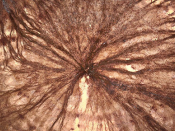Por Manuel Cardenas (CFTC, Lisbon University).
The compaction behavior of deformable grain assemblies beyond jamming remains misunderstood. Existing models that seek to find the relationship between the confining pressure P and solid fraction ϕ end up settling for empirical strategies or fitting parameters. Numerically and experimentally, we analyze the compaction of highly deformable frictional grains in two and three dimensions: numerically, using a coupled discrete-finite element method, the Non-Smooth Contact Dynamics Method (NSCD), and experimentally using high-resolution imaging coupled with a dedicated DIC algorithm. At the microscopic scale, different power-law relations are evidenced between the local grain structure and contacts, and the packing fraction and pressure, regardless of the shape, or the dimensionality (2D/3D). We also present a micromechanical-based approach for the compaction of soft granular assemblies far beyond the jamming point. This latter is derived from the granular stress tensor, its limit to small deformations, and the evolution of the connectivity. Furthermore, from the expression of these well-defined quantities, we establish different compaction equations, free of ad hoc parameters, well-fitting our numerical and experimental data. This theoretical framework unifies the compaction behavior of assemblies of soft and noncircular soft particles coherently, both in 2D and 3D, for isotropic and uniaxial compression.
References:
- Three-dimensional compaction of soft granular packings, Soft Matter, M. Cárdenas-Barrantes, D. Cantor, J. Barés, M. Renouf, E. Azéma, Soft Matter, 18, 312-321 (2022).
- Experimental validation of a micromechanically based compaction law for soft/hard grain mixtures, M. Cárdenas-Barrantes, J. Barés, M. Renouf, and É. Azéma Physical Review E, (2022).


















